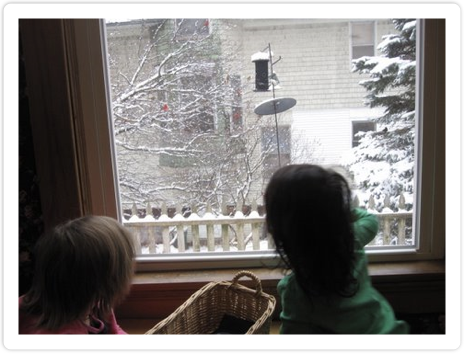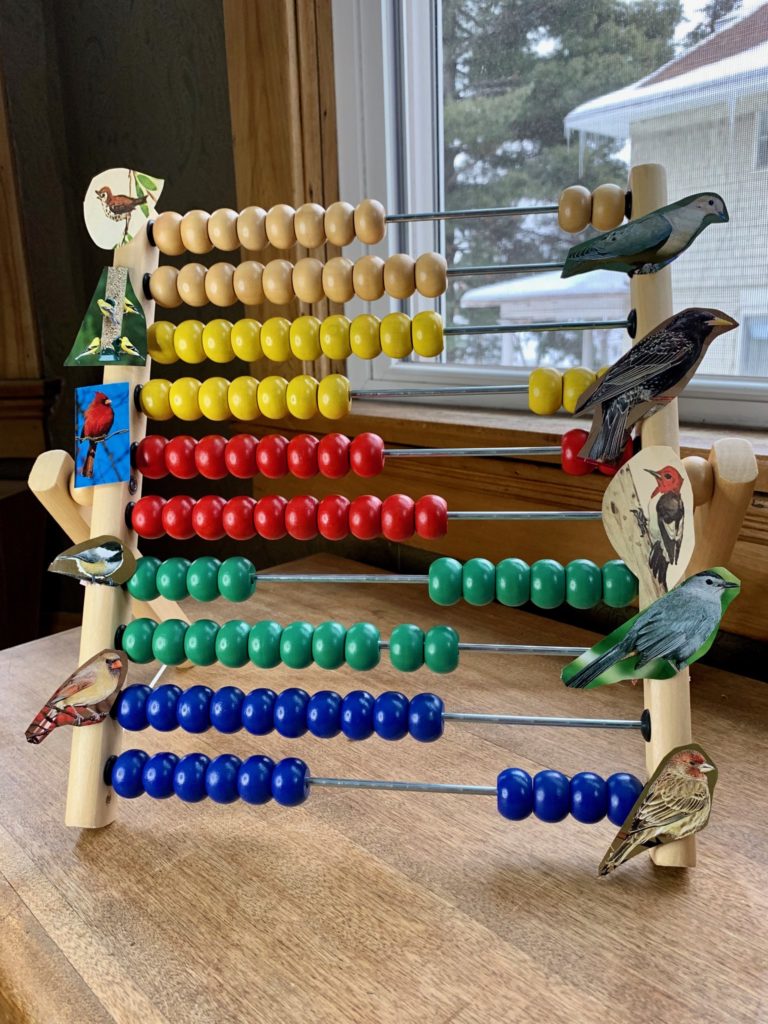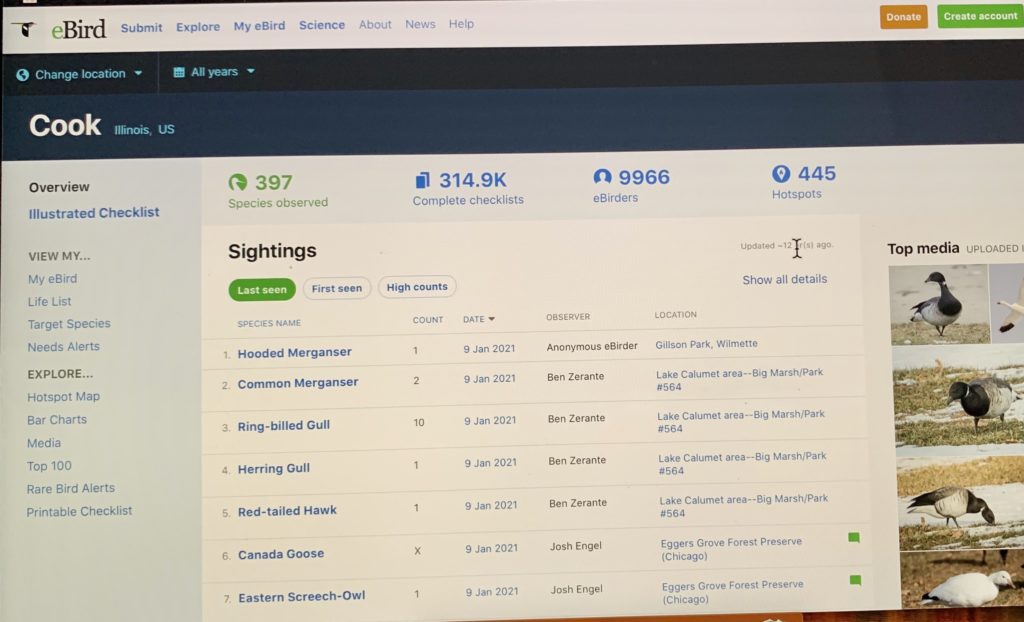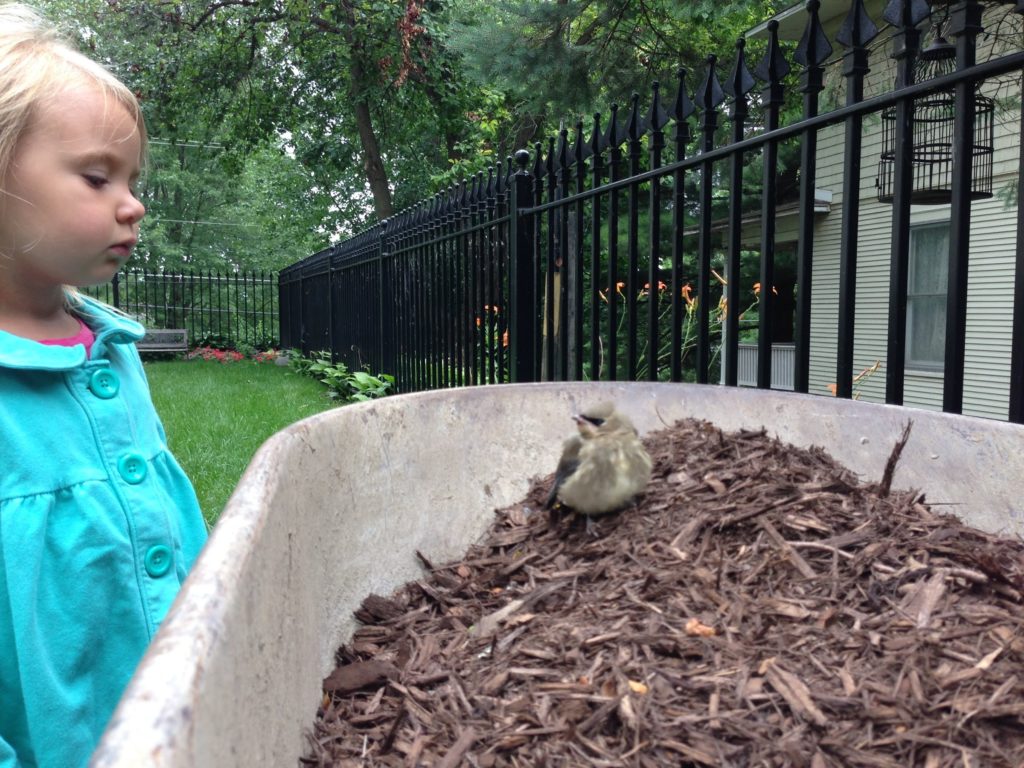STEM in the Bird Feeder

“I see the daddy cardinal, do you know where the mama bird is?” Four-year-old Noah, binoculars in hand, is busy counting birds in our outdoor classroom.
Are you aware that the annual Great Backyard Bird Count is coming up later this week? This is a great opportunity to create a bird-watching station and knock out some STEM and early learning standards while encouraging family involvement.
Mark your calendars for Feb 12-15 and join us for this fun and educational week!
February and March are good months for bird watching and bird counting in our program. This is a great way to accelerate STEM learning on days when below-zero wind chills make outdoor play impossible.

We have bird feeders set up right outside of our windows so that we can set up indoor bird-watching stations to give the children close-up views of their feathered friends.
We provide clipboards, books, binoculars and our abacus to help with the bird count. We also use this opportunity to teach our students how to tally on a tally chart. We reference the eBird website, which shares local sightings of different bird species.
I take the top ten birds sighted in our area on the eBird website and add pictures of those birds to our abacus. To do the same thing, just add your location to the eBird website and you’ll see which birds are sighted most often in your area. It’s quite fabulous!
We also like The Cornell Lab and the Audubon Society. I have the Cornell Lab Merlin Bird ID app on my phone to help us identify birds by their songs.
Your local U.S. Fish and Wildlife Service may also be able to provide free materials for bird identification. There is a big difference between bird identification books for children and those that were written for mature bird watchers. I would check some out at your local library or bookstore before purchasing.

This is a great opportunity to practice not only counting, but grouping by attributes or close observation of the differences between a downy woodpecker and a red-bellied woodpecker.
We try to keep a ruler nearby for our older children to use to determine whether they have spotted a six-inch downy woodpecker or a nine-inch hairy woodpecker. This offers the children an opportunity to use estimation and practice using real tools for observation.
This is also a great time to introduce Venn diagrams for clarification and documentation.
By creating a comfortable and inviting place for the children to birdwatch—complete with pillows, chairs and tables with baskets of binoculars—you can encourage them to slow down and observe more often.
By planting native plants in your outdoor classroom, you will also attract more birds to your bird-watching stations.

We remind our kids that outdoor birds are hard to spot but easy to hear. We ask them to close their eyes and point to where the song is coming from. I like to teach common mnemonics like the American Robin’s cheery up, cheerio, which can be picked up on almost any bird walk in the United States. Learn some mnemonics for common birdsongs here.
![]()
![]()
![]()
![]()

We have tried the inexpensive plastic binoculars from school-supply stores and toy aisles. They really didn’t work well and broke the same day that we brought them out. Smaller, child-sized binoculars are much easier for little hands to manage. Children enjoy using “real” tools and will treat them with much more respect than a pair of cheap plastic ones. I often teach them how to focus the binoculars to get a clear image. I place these binoculars in a basket, along with the identification books. We also stock our bookshelves with a wonderful collection of books about birds, nests and hatchlings.

We talk so much about STEM these days. This is one of the easiest and most magical ways to create a learning hub that can inspire young learners to engage in STEM exploration and discovery.
By participating in these learning adventures, you can learn right along with the children as you observe, ask questions, draw conclusions and discuss your findings with your early learners.
When we observe birds from our indoor birdwatching stations and then take those same observational skills outdoors, we have a deeper understanding of the birds we see and the birdsong we hear.
By adding the technology from the websites mentioned above and building bird feeders from oranges or peanut butter and seeds, we can include engineering in our learning adventures. We can include math as we count the number of birds arriving at the feeder and then subtract the birds that fly away. By grouping, measuring and comparing the birds, we can meet our early learning standards and benchmarks.
I hope you will join us in our Great Backyard Bird Count this year. Birds of a feather flock together. Come join the fun!


We also have a big window in our classroom were we see many birds. Can’t wait to apply some of your ideas into my lesson plans.
we use children’s binoculars to go on a safari hunt and lots of math is involved
I am very impressed with how you use the abacus in a whole new way. I thought I was the only old fashioned, fuddy dud teacher who loves to use real hands on materials. I have my class create bird spotting books where they tally the birds they see each day and at the end of the week we put everyone’s totals on a big chart and see what was the most popular bird in our neighborhood that week. Thanks for the resouces on bird whistles too!